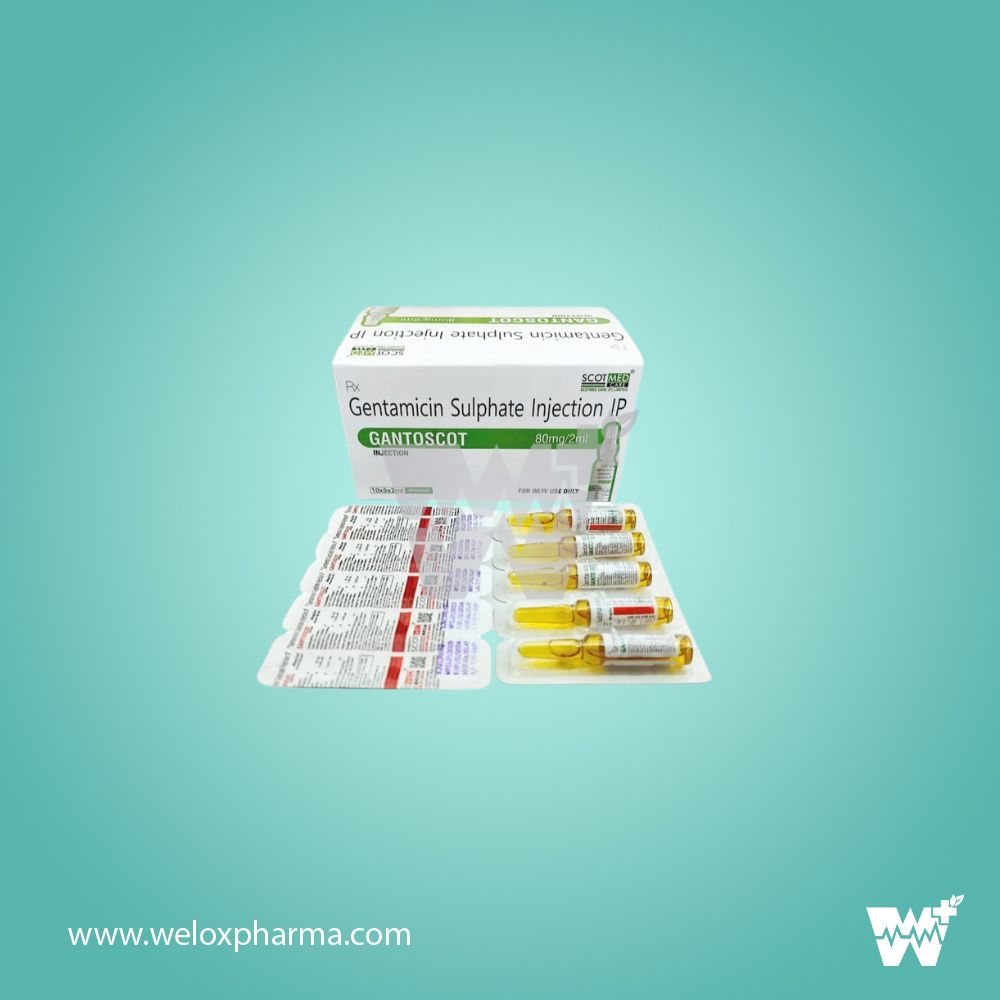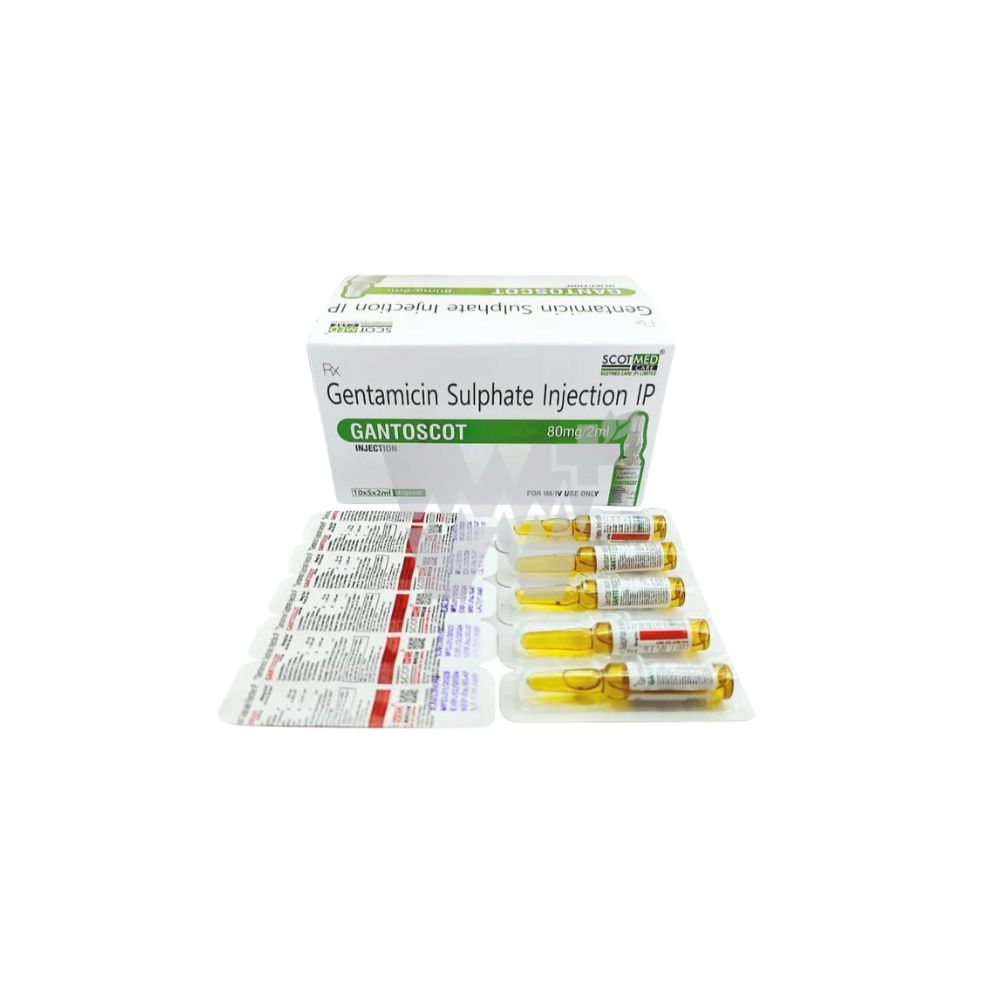



Introduction to Gantoscot:
Gantoscot Gentamicin Sulphate Injection 80 mg is an aminoglycoside antibiotic used to treat severe bacterial infections. This medication is administered by injection and is primarily used in hospital settings to manage serious infections that are resistant to other antibiotics.
Uses of Gantoscot:
Gantoscot is indicated for:
Severe Bacterial Infections: Treatment of serious infections caused by susceptible Gram-negative bacteria and some Gram-positive bacteria.
Sepsis: Management of bloodstream infections.
Bone and Joint Infections: Treatment of osteomyelitis and septic arthritis.
Intra-abdominal Infections: Management of peritonitis and other abdominal infections.
Urinary Tract Infections: Treatment of complicated urinary tract infections.
Skin and Soft Tissue Infections: Management of severe skin and soft tissue infections.
Benefits of Gantoscot:
Gantoscot offers several benefits:
Broad-Spectrum Activity: Effective against a wide range of bacterial pathogens.
Rapid Action: Quickly inhibits bacterial growth, making it suitable for acute infections.
Critical Care Use: Essential in the treatment of life-threatening infections in hospital settings.
Combination Therapy: Often used in combination with other antibiotics to enhance efficacy.
Mechanism of Action of Gantoscot:
Gentamicin Sulphate: Works by binding to the bacterial 30S ribosomal subunit, inhibiting protein synthesis. This action leads to the disruption of bacterial cell function and ultimately the death of the bacterial cells. Gentamicin is particularly effective against aerobic Gram-negative bacteria and certain Gram-positive bacteria.
Dosage and Administration:
Dosage: The dosage of Gantoscot Gentamicin Sulphate Injection 80 mg depends on the severity of the infection, patient's weight, and renal function. Typical dosages range from 3 to 5 mg/kg per day, divided into multiple doses.
Administration: Administered by intravenous (IV) or intramuscular (IM) injection in a clinical setting. Proper dilution and administration protocols should be followed to ensure effectiveness and minimize adverse effects. Close monitoring of kidney function and drug levels is essential to avoid toxicity.